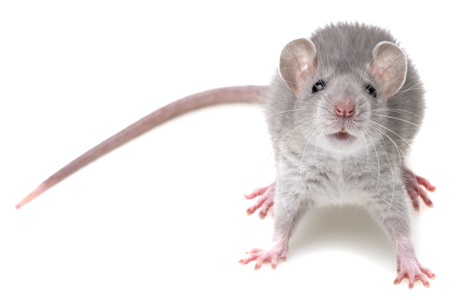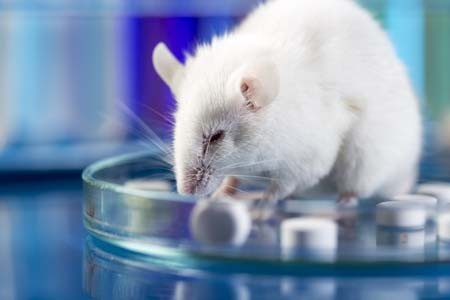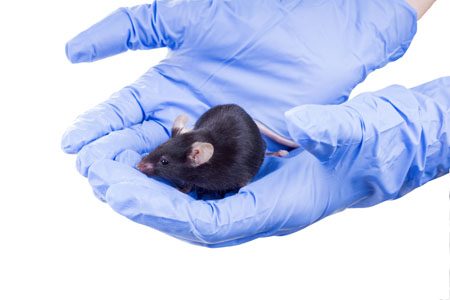Neurotransmitters Can Also Function As Epigenetic Marks
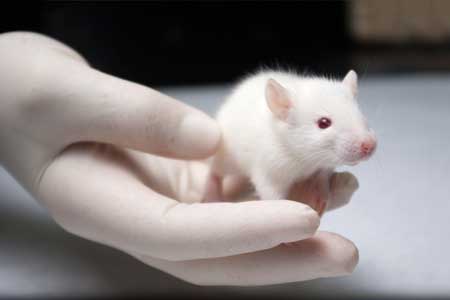
The most common epigenetic marks involve methylation of DNA (which usually inhibits gene transcription) and the acetylation and methylation of histones. Acetylation opens or loosens the winding of DNA around the histones and facilitates transcription, while methylation of histones leaves the DNA tightly wound and inhibits transcriptional activation.
Researcher Ashley E. Lepack and colleagues have identified a surprising type of epigenetic mechanism involving neurotransmitters. They report in a 2020 article in the journal Science that neurotransmitters such as serotonin and dopamine can act as epigenetic marks. Dopamine can bind to histone H3, a process called called dopaminylation (H3Q5dop). In rats undergoing withdrawal from cocaine, Lepack and colleagues found increased levels of H3Q5dop in dopamine neurons in a part of the midbrain called the ventral tegmental area (VTA), a part of the brain’s reward system. When the investigators reduced H3Q5dop, this decreased dopamine release in the reward area of the brain (the nucleus accumbens) and reduced cocaine seeking. Thus, dopamine can be both an important transmitter conveying messages between neurons and a chemical mark on histones that alters DNA binding and transcriptional regulation.
Researcher Jean-Antoine Girault provided commentary on the article by Lepack and colleagues, writing that “[t]he use of the same monoamine molecule as a neurotransmitter and a histone modification in the same cells illustrates that evolution proceeds by molecular tinkering, using available odds and ends to make innovations.”
Editor’s Note: Epigenetic marks may remain stable and influence behavior over long periods of time. They are involved in the increased reactivity or sensitization to repeated doses of cocaine through DNA methylation. Such sensitization can last over a period of months or longer. If the methylation inhibitor zebularine is given, animals fail to show sensitization. Now a newly identified epigenetic process, dopaminylation, is found to alter histones and is associated with long-term changes in cocaine-seeking.
The clinical message for a potential cocaine user is ominous. Cocaine not only creates a short-term “high,” but its repeated use rewires the brain not only at the level of changes in neurotransmitter release and receptor sensitivity, but also at the genetic and epigenetic level, changes that could persist indefinitely.
The sensitization to motor hyperactivity and euphoria that occur with cocaine use can progress to paranoia and panic attacks and eventually even seizures (through a process known as kindling).
The dopaminylation of histones in the VTA could lead to persistent increases in drug craving and addiction that may not be easily overcome. Thus, the appealing short-term effects of cocaine can spiral into increasingly adverse behaviors and drug-seeking can become all consuming. While these adversities do not emerge for everyone, the best way to ensure that they do not is to avoid cocaine from the start.
Manic episodes that include a feeling of invincibility, increased social contacts, and what the DSM-5 describes as “excessive involvement in pleasurable activities that have a high potential for painful consequences” are a time that many are at risk for acquiring a substance problem. For the adolescent who has had a manic episode, ongoing counseling about avoiding developing this type of additional long-term, difficult-to-treatment psychiatric illness could be lifesaving. Describing the epigenetic consequences of substance use may or may not be helpful, but may be worth a try.
In Mice, Knockout of Circadian CLOCK Genes Resembles Mania
Colleen McClung reviewed and extended previous findings of hers that knocking out a gene known as CLOCK in mice could reproduce most aspects of bipolar mania, including symptoms such as hyperactivity; decreased sleep; less depression; more impulsivity, risk taking, and novelty seeking; and increased reward-seeking including substances such as cocaine, alcohol, and sucrose. This syndrome in mice can be reversed by giving the mice lithium and valproate.
Knocking out the CLOCK gene produced an increased firing rate and burst firing of dopamine neurons in the ventral tegmental area (VTA). Localized knockout of the CLOCK gene in the VTA alone also reproduced the increase in dopamine cell firing.
When McClung and colleagues knocked out CLOCK in the medial prefrontal cortex, the normal development of a type of neurons called GABAergic parvalbumin interneurons did not occur in adolescent mice, and in adulthood, certain neural nets did not mature, leading to increases in oxidative stress, mitochondrial and cellular dysfunction, and the behavioral abnormalities that resembled mania. This animal model thus gives insight into how a genetic deficit in circadian rhythm genes in humans could influence the timing of behavioral abnormalities starting in adolescence and lasting through adulthood.
Study in Mice Suggests that Compound in Turmeric May Reduce Anxiety and Promote Resilience to Stress
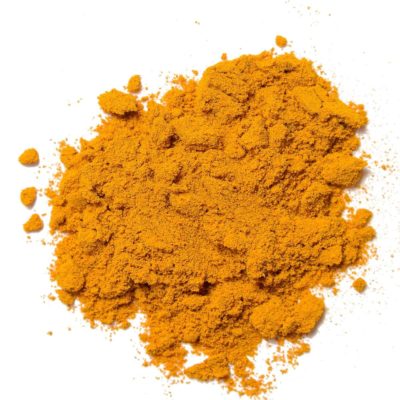 Chronic stress is a risk factor for the development of mood and anxiety disorders. Researchers have begun to focus on how to promote resilience to stress. Curcumin is a micronutrient found in turmeric that has anti-inflammatory and antidepressant effects and may promote such resilience.
Chronic stress is a risk factor for the development of mood and anxiety disorders. Researchers have begun to focus on how to promote resilience to stress. Curcumin is a micronutrient found in turmeric that has anti-inflammatory and antidepressant effects and may promote such resilience.
Researchers studying human depression often design studies to see how mice with chronic social defeat stress respond to various interventions. Mice who are repeatedly menaced by a larger mouse begin to show symptoms that resemble human depression, such as social avoidance, lack of interest in saccharin compared to plain water (a stand-in for loss of enjoyment or anhedonia in humans), and anxiety.
In a 2018 article in the journal Neuropsychopharmacology, researcher Antonio V. Aubry and colleagues described the effects of curcumin on mice undergoing chronic social defeat stress. Mice who were given a diet that consisted of 1.5% curcumin showed a 4.5-fold increase in resilience to social defeat stress, measured by their performance during a test of social interaction. Among the 129 mice in the study, 64% showed the increase in resilience, the remaining 36% did not respond to the curcumin diet and had the normal ‘depressed’ response. The mice who responded well to curcumin released less of the stress hormone corticosterone, and they also had lower levels of the inflammatory marker IL-6.
All of the mice on the curcumin diet showed reduced anxiety during tests that forced them to travel through open spaces (when they prefer to stay in more enclosed spaces or move along the edges of an enclosure).
Rich Western Diet Reprograms Immune Cells in Mice
A 2018 article by Anette Christ and colleagues in the journal Cell describes the process by which a Western diet can trigger changes to the immune system in mice. The mice fed a calorically rich Western diet started to show systemic inflammation. Blood measures of inflammation returned to normal after the mice resumed their regular diet, but their immune responses remained heightened, as if the immune system had been trained to overreact.
The vast majority of deaths in Western cultures are caused by noncommunicable diseases such as type 2 diabetes and cardiovascular disease, which have been linked to lifestyle factors such as diet and exercise. The immune system has two wings: one that responds to specific pathogens, and one that mounts general protection against infection and is triggered by immune signaling receptors. However, according to Christ and colleagues, in addition to reacting when microbes are present, this second wing may also respond to “sterile” danger signs, such as consumption of a Western diet. The immune system may become trained to react this way chronically, something that the researchers believe may trigger inflammation in noncommunicable diseases.
The Western diet triggered epigenetic changes to the mice’s immune system. Epigenetic changes are ones that affect the structure of DNA, for example how tightly it is packaged. In the case of the Western diet, these changes resulted in a heightened immune system that launched strong inflammatory responses in reaction to even small stimuli. Myeloid cells from bone marrow were reprogrammed to proliferate and provide a stronger immune response.
The researchers also took human monocyte cells trained with LDL (“bad”) cholesterol and stimulated them with lipopolysaccharide (an inflammatory compound made of fat and sugar). The cells showed a heightened immune reaction similar to that seen in the mice.
Mice genetically engineered to lack the inflammasome NLRP3, which activates inflammatory responses, did not show the systemic inflammation or the enhanced myeloid activity when fed the Western diet, so Christ and colleagues believe NLRP3 may play an important role in mediating the immune response to the Western diet.
In Rats, Weight-Loss Drug Lorcaserin Reduces Opiate Use
The serotonin 5HT-2c agonist drug lorcaserin (Belviq) was approved by the US Food and Drug Administration in 2012 for the treatment of obesity and weight-related conditions (such as high blood pressure, type 2 diabetes, or high cholesterol) in adults. A 2017 article by researcher Harshini Neelakantan and colleagues in the journal ACS Chemical Neuroscience reports that in rats, lorcaserin may also reduce opiate use.
The rats had been self-administering the opiate oxycodone. After receiving lorcaserin, the rats were less likely to consume oxycodone and less likely to seek it out. The rats were also less responsive to cues that had previously led them to consume oxycodone, such as lights or sounds that occurred when oxycodone was available.
Serotonin 5HT-2c receptors both regulate psychostimulant reward in the brain and play a role in reactivity to cues like the lights and sounds the rats associated with oxycodone. Lorcaserin’s effect on these serotonin receptors explains how it could reduce the rats’ drug use.
Clinical trials are expected to examine whether lorcaserin can reduce opiate use in humans in addition to assisting with weight loss.
Coenzyme NAD+ Postpones Aging in Mice and Worms
 Aging cells seem to lose their ability to repair DNA, while the mitochondria that power cells also become less reliable. A coenzyme called NAD+ may be able to postpone these changes. NAD+, which is found in all living cells, naturally decreases with age.
Aging cells seem to lose their ability to repair DNA, while the mitochondria that power cells also become less reliable. A coenzyme called NAD+ may be able to postpone these changes. NAD+, which is found in all living cells, naturally decreases with age.
A 2016 article by Evandro Fei Fang and colleagues in the journal Cell Metabolism reports that giving mice and roundworms supplemental NAD+ postponed cell aging and extended the lives of these animals.
The researchers hope this research might eventually help patients with Alzheimer’s and Parkinson’s’ diseases.
Weight Loss Drug Lorcaserin Cuts Opiate Use in Rats
 Lorcaserin is a drug approved for weight loss in very obese patients. It stimulates serotonin 5 HT-2c receptors thought to control appetite by inducing the secretion of the polypeptide pro-opiomelanocortin. In a 2017 article in the journal ACS Chemical Neuroscience, researcher Kathryn Cunningham and colleagues reported that the drug had reduced opiate use and craving in rats. Previous research by Cunningham showed that lorcaserin reduced cocaine seeking in rats.
Lorcaserin is a drug approved for weight loss in very obese patients. It stimulates serotonin 5 HT-2c receptors thought to control appetite by inducing the secretion of the polypeptide pro-opiomelanocortin. In a 2017 article in the journal ACS Chemical Neuroscience, researcher Kathryn Cunningham and colleagues reported that the drug had reduced opiate use and craving in rats. Previous research by Cunningham showed that lorcaserin reduced cocaine seeking in rats.
Most treatments for opiate addiction work by occupying opiate receptors so that opiates are prevented from stimulating them, thus reducing the pleasurable effects of the opiates. It is not yet well understood how drugs like lorcaserin that target serotonin 5 HT-2c receptors affect the brain’s reward system.
In the study, rats were trained to self-administer oxycodone. They were also trained to associate certain lights and sounds with oxycodone availability. Lorcaserin reduced the rats’ drug-seeking behavior and also weakened the link between the light and sound cues and the drug-seeking behavior.
Future research may explore whether drugs like lorcaserin can reduce opiate use in people.
Currently, there are a few options to treat opiate addiction. N-acetylcysteine (NAC) is an over-the- counter (nonprescription) drug that has been shown to decrease opiate use in both animals and humans. NAC also decreases use or craving for many other drugs of abuse including cocaine, alcohol, nicotine, and marijuana. NAC reduces the excitatory glutamate signal in the reward area of the brain (the nucleus accumbens) by increasing the number of transporters carrying glutamate out of the synapse and into glial cells. It has an excellent side effects profile and can readily be used in opiate-addicted patients.
Opiate replacement therapy with methadone or the partial opiate agonist buprenorphine is one treatment option for opiate addiction. Buprenorphine is also combined with the opiate antagonist naloxone in a drug called Suboxone, which can reduce opiate use. Naloxone is a pure opiate antagonist that can rapidly reverse the respiratory-suppressing effects of an overdose of opiates.
Disrupting Memories of Cocaine Use Might Prevent Relapse
Cocaine users who want to abstain from the drug may find that encountering people or places who remind them of past cocaine use can increase their cravings for the drug and lead to relapse. Researchers are studying animals to see if disrupting the link between an environmental cue and the memory of cocaine’s effects could reduce cravings for the drug.
In a 2016 article in the journal Neuropsychopharmacology, researcher Melissa S. Monsey and colleagues reported that in rats, the amnesia-causing natural compound garcinol can weaken the cues that lead to a cocaine-seeking. Garcinol is derived from the rind of kokum (or Garcinia indica) fruit, which is native to the west coast of India.
Monsey and colleagues delivered the garcinol during a period when the rats’ brains were reconsolidating memories that linked an environmental cue with the pleasurable effects of cocaine.
For 12 days, the rats in the study could press a lever and receive an intravenous infusion of cocaine that was paired with a light and a sound. Then the lever stopped working for 8 days. Next, the researchers observed how the rats behaved when the light and sound returned.
The light and sound were meant to remind the rats of the previous times they received cocaine, prompting their brains to reconsolidate the memory linking the light/sound with the pleasurable effects of cocaine.
Half of the rats were given an injection of garcinol during this memory reconsolidation period. While all of the rats continued to seek out cocaine, in the garcinol-treated rats, the light/sound was no longer linked to cocaine. Their cocaine-seeking behavior from then on was unrelated to the light/sound, and the link between the light/sound and cocaine could not be reinstated in these rats.
This research on rats may help clarify how cravings are produced in the brain, and how they might be prevented or treated.
Editor’s Note: In 2012, Yan-Xue Xue and colleagues reported in the journal Science that in humans, psychological techniques can be used to help a patient unlearn the association between an environmental cue and the effects of a drug, using the same theory of the memory reconsolidation period. When patients in recovery from heroin addiction were prompted to revisit memories of heroin use 10 minutes before extinction training (in which they looked at heroin or heroin paraphernalia without receiving the drug), they ended up with fewer cravings for heroin 1, 30, and 180 days later compared to patients who did extinction training without revisiting memories of past heroin use (and thus without opening the memory reconsolidation window, which researchers believe opens 5 minutes to an hour after someone engages in active recall).
Immune Response to Repeated Stress Alters Behavior in Mice
In research presented at the 2016 meeting of the Society of Biological Psychiatry, Jonathan P. Godbout described how an immune reaction to repeated stressors may lead to anxious behaviors in mice.
Mice were repeatedly defeated by a larger animal, a form of stress that produces a depression-like state. This provoked an immune response in the mice—the release of a type of white blood cells called monocytes from the bone marrow into the circulatory system. These inflammatory monocytes then traveled to the brain and spleen, attracted by signaling proteins called chemokines. The monocytes in turn produced inflammatory marker interleukin-1beta.
The defeat stress also provoked a reaction in the central nervous system, where microglia were activated.
These changes produced inflammation and anxiety-like behaviors in the mice. Blocking the microglial activation, monocyte recruitment to the brain, or interleukin-1beta signaling each reversed the anxiety-like behaviors.
Another researcher, Scott Russo, has shown that leukocytes, another type of white blood cells, secrete inflammatory interleukin-6 following defeat stress, and blocking this secretion prevents defeat stress–related behaviors.

